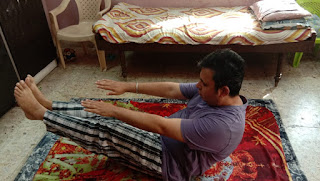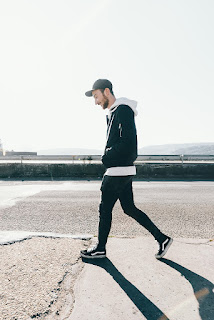Adho Mukha Svanasana or Downward Facing Dog Pose – How to do, Benefits, Contraindications
 |
| Adho Mukha Svanasana or Downward Facing Dog Pose |
Adho Mukha Svanasana or Downward Facing Dog Pose – Steps, Benefits, Contraindications
Adho means forward, Mukha means
Face, Svana means Dog and Asana means Pose. This pose replicates a dog bending
forward. Hence it is called as downward facing dog pose. It is an inversion
pose. It is one of poses in Surya Namaskar. It should be included in daily part
of yoga practice. It can be practiced by beginner too.
How to do Adho Mukha Svanasana or Downward Facing Dog Pose
·
Warm up calves and arms properly before
performing this pose.
·
Come onto fours and form a table position. Back
will form top of table. Hands and feet will form legs of table.
·
Breathe out and lift hips up. Straighten knees
and elbows. Form an inverted V-shape with body.
·
Hands should be shoulder width apart. Feet will
be hip width apart and parallel to each other. Toes should point straight
ahead.
·
Press hands into ground. Widen through shoulder
blades, keep neck lengthened by touching ears to inner arms.
·
Hold the pose. Take long deep breaths. Look
towards navel.
·
Exhale. Bend knees and return to tabletop
position. Sit in Vajrasana. Relax.
Benefits of Adho Mukha Svanasana or Downward Facing Dog Pose
·
This pose energizes and rejuvenates practitioners’
body.
·
It strengthens whole body especially arms,
shoulders, legs, feet.
·
It lengthens spine, strengthens muscles of chest.
It increases lung capacity.
·
It helps to tone muscles.
·
It calms mind and helps relieve headache,
insomnia and fatigue.
·
It increases circulation to brain.
·
It improves mobility in digestive system.
·
It elongates and releases tension from spine.
·
It helps relieve symptoms of menopause.
Contraindications of Adho Mukha Svanasana or Downward Facing Dog Pose
·
Avoid doing this pose if you have following conditions:
Blood Pressure, Carpel Tunnel Syndrome, Detached Eye Retina, Weak Capillaries,
Dislocated Shoulder/ Shoulder Injury, Diarrhea, Eye or Inner ear infection..
·
In late term pregnancy, do not do this pose.



Comments
Post a Comment